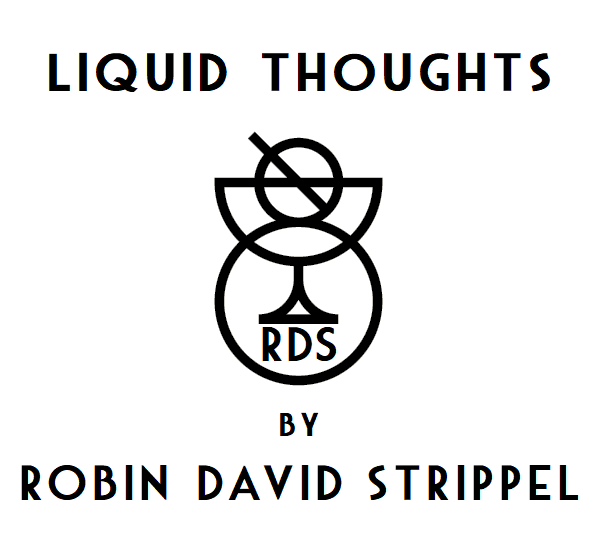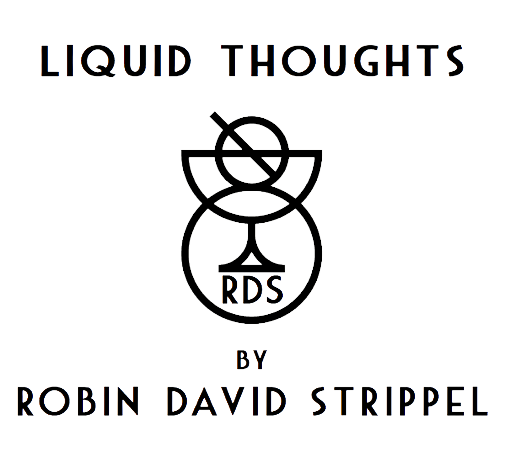#38 | Garçon, Munich, Germany
Last Visit: December 2023
I'll start with a really old-fashioned cliché of a sentence: This time I'd like to introduce you to a real gem of German bar culture. Why use it when it sounds so awful? Because when I hear the word “gem” in connection with contemporary bars, I always immediately think of Garçon: not a prominent, shining diamond, rather something slightly hidden, calming, instead of almost annoyingly in your face. All of which can and must be more than appreciated for many sorts of reasons.
If you were to apply the “If you could only have/do one XYZ for the rest of your life, what do you choose?”, which is so popular in the age of daily social media reels, to bars and I was only allowed to go to, say, 10 German bars for the rest of my life, Garçon would be on this list (John would answer the same, by the way). Why is that the case? We'll get to that in a moment, but first let's lay out the most important facts!



Mario Messig's bar has been around since 2016, which is quite an impressive age for bars these days, so something must have worked out. The typical, small, perfect bar size, around 30 seats, just 2 streets away from the famous Viktualienmarkt and with a small but stylish outdoor area in summer. When you walk in, you might think of it as a modern, slightly hip café thanks to the quietness and brightness inside, especially in summer. The craft coffee theme was indeed more present here at the beginning. However, apéritif drinks and, in particular, wine have taken the place of coffee in recent times. A small but fascinating and fine selection of 6 open bottles and a few more closed bottles can be found here, including orange wine, Pet Nat and sometimes even cider. I was particularly pleased to see the fantastic Pittnauer Perfect Day again, which I already knew from a wine bar here in the Rhineland. A remarkable summer wine with guava, bergamot, and sage notes.
According to a statement in an older interview, the limitation of coffee was also due to the noise that would be associated with it in the evening. For exactly the same reason, Garçon only serves stirred drinks; in the small bar, intense shaking would indeed create a different atmosphere. In hindsight, the more I think about why I always find it so incredibly relaxing and special there, this could indeed be one of the inconspicuous, but quite important, reasons.
By the way, “stirred drinks only” does not mean what you might have in mind at first, the old, edgy, hard classics. Long drinks can also be made in a glass and stirred or topped up, of course. On the contrary, instead of very boozy Old Fashioneds and old-school Manhattans, the bar has been somewhat focusing on elegant and rounded creations long before Low-ABV became the big, new thing, often with at least “lower” ABV options. Nevertheless, they are still usually inspired by the classics and Old Fashioneds, Manhattans or Rob Roys are also frequently served. However, the ratio of base spirit to a lower-proof partner in the drink is modified, and it rarely works as well and aromatically as it almost always does here. There are around 15 drinks per seasonal menu, including a few non-alcoholic drinks and half of the rest are changing drinks from previous menus (the best-of principle, which I always like as an idea) and of course completely new creations.
What you also get here, by the way, is one of the best breads with salted barrel butter that I have ever had, not just in bars, but in general. I've never ever walked out of the bar with less than two portions, the sourdough bread is sourced from an independent bakery in Munich. Currently, the bar snacks also include sardines and spicy mussels from Spain, a very interesting and unusual choice, which is again why it fits perfectly with the European theme.



In general, I like Messig's approach to the bar, the drinks, but also the topics that are important to him, such as sustainability and less waste. The latest issue of Mixology (4/2024) features him in a short interview, which also reminded me to finally get to work on this article. From considerate drink garnishes to the fact that only European spirits/alcoholic beverages are used at Garçon, which actually makes the bar stand out quite a bit in the bar community. Other bars would put that fact front and center, do lots of PR with it, blah blah blah. Messig takes a calmer approach, does everything more for himself and simply because he thinks it’s what he wants, and I like that. Personally, I think many topics would not be so ferociously and aggressively debated today if the idea of working on oneself was more the focus of living more sustainable. Thinking about “What kind of future do I want” instead of only pointing the finger at others or be overly vocal about every detail or of course, as already mentioned: seeing it as a promising PR stunt.
The bar itself naturally exudes a certain flair because of these approaches, thanks maybe to the founder’s architectural studies, understanding of design and understated elegance, it never takes away too much of your attention. The old, vintage brass gadgets on the bar, the bar tools stored simply in a small wooden box. And of course the vinyl records above the back bar, a big hobby for him, but again: unobtrusive. No big references in the menu (except for drink names, of course), no loud “feature”, no big talk about it, just his thing. It might be a bit hipster or alternative compared to other bar projects, but hey, it's the Munich version of alternative, so in other words, non-Munich residents won't even recognize it as such.
But let's get to our cocktail examples, a small but fine selection after more than 4 visits on my part and one from John, who contributed the last one:
Betsy Ross
| Cognac
| Port Wine
| Dry Curaçao
| Maple Syrup
| Nutmeg
One of my favorite drinks in the bar so far, even though it probably has the most “classic” list of ingredients of them all. But it is the definition of a “timeless classic” without actually being a classic, cognac + port wine + bitter orange and then add a little spice and sweetness, what could possibly go wrong? Wonderfully smooth, dark and yet easily drinkable, fruity and spicy-sweet. Tasting you get grapes and red fruits of course, plus the candied orange peel and some nuttiness. I could enjoy this every day.
Pallas
| South Tyrol Apricot
| Eau de Vie
| White Vermouth
| Sherry
| Verjus
| Sugar
| Cocktail Bitters
It sounds quite exciting straight away, even more so when you know that the first ingredient is a quality apricot eau de vie and the second “eau de vie” in it is an Italian grape brandy, UvaViva by Poli. It had great notes of apricot, dried fruit and sherry on the nose. The Poli Eau de Vie started off with wonderfully fresh and clear grapes, then comes young, bright apricot and some nuts and dried fruit from the sherry, followed by a well-integrated, not too loud grape acidity from the verjus. The bitters in turn gave the finish a touch of complexity for a cocktail intended as a summer drink. I was particularly enthusiastic about the exciting combination of ingredients, fruity and summer is not just about juices and spritz variants, as this cocktail shows perfectly …
Pilot Jones
| Rosé Wine
| Rye Whiskey
| Brandy
| Red Vermouth
| Herbal Liqueur
As seemingly in every single bar in Munich, rye whiskey is synonymous with the German brand Stork Club here. This is hardly surprising, as it naturally goes well with rosé due to its lighter and sometimes even floral notes! Benedictine D.O.M., on the other hand, is behind the herbal liqueur, and what drink with that one was ever bad? That's right. None. Or it was your own fault. In this case, the nose is elegant but interestingly relatively restrained for the amount of aromatic ingredients, with grapes and a subtle herbal mixture coming through. On the palate, it is much more complex and intense, with dried fruit, peach and grapes, elegant spices and herbs, wormwood and gentian particularly striking. Fennel, vanilla and Amarena cherries also make themselves known. Elegant, fruity, herbal, silky, a great stirred drink, but not in the typical sweet nightcap style, it is also ideal for the earlier evening.
Melody Noir
| Cold Brew Coffee
| Brandy
| Red Vermouth
| Crème de Cacao
| Bitter Orange
A smooth, velvety stirred drink that focuses primarily on the dry, grape aromas of brandy and vermouth. As a fan of the historic orange liqueur, a nice Cointreau note comes through. The coffee in the form of cold brew remains sweet and fruity, which is really pleasant and well integrated. Not too much acidity, but rather cherries in the foreground, as we have come to expect with roasts from South America. The cocoa underlines the whole thing once again and provides subtle support for the woody aromas of the spirits.
/jf
Let's go back to the beginning for our conclusion. Why is Garçon in this list of bars that I would never want to miss in Germany? The bar does a few things differently, it has a something of Tokyo, a tad of Italy and Munich and a lot of Messig himself and this combination is very convincing and unique. When I think of Garçon, I always immediately want to go to Munich, I start to think about bars in general and their diversity, as well as their potential to express the personality of the person behind them.
In particular, it's a great example of how it's possible to make full-flavored and not too alcohol-intensive drinks at the same time without high-tech gadgets or many modern marketing products. In that eternal list of German bars, it would always be my choice for the start of an evening with some apéritif drinks. Alternatively, especially in the summer, for the whole night, alone, or with just one or two great friends. The ones you talk to for five hours straight and suddenly think “What time is it anyway, we only got here an hour ago, right?” just before looking at the clock.
/rds
Teile des Menüs (aus verschiedenen Saisons):










